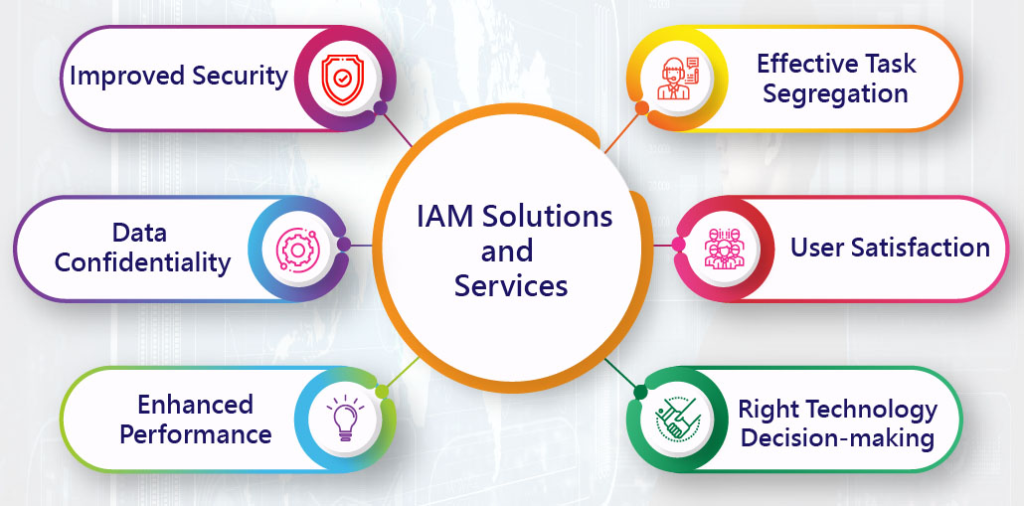Top Benefits of Implementing Identity and Access Management in Your Organization

Identity management solutions match login information like usernames and passwords against an identification database. This ensures a person’s access to company resources is valid.
It also helps companies implement minor privilege policies, preventing employees from receiving broader permission than they need to complete their work. In addition, IAM solutions help automate provisioning and de-provisioning processes.
Increased Security
IAM gives you greater visibility and control over who is accessing your systems and data. It verifies user identities to confirm they are who they say they are while granting only the appropriate level of permissions for each role. This prevents users from accessing more than they are allowed to and protects your company from the risk of data breaches. IAM also helps you meet increasingly rigorous compliance requirements, such as those imposed by GDPR and the Consumer Privacy Act.
The main functions of IAM are identity management, provisioning and de-provisioning, privileged access management (PAM), and monitoring user activity. IAM provides tools and technologies to manage employees’ access to systems, databases, information, and software. To avoid security risks caused by ex-employees retaining access to critical systems, most IAM solutions follow the principle of least privilege: users are granted the minimum level of permission required to perform their jobs, and access is automatically revoked when they leave the company or change roles. IAM solutions also help automate access and authentication processes for a more secure, consistent device experience.
Increased Productivity
Identity and Access Management provides centralized user provisioning tools that allow users to sign in to a single workspace and gain access to the applications and tools they need. This reduces the time spent logging into multiple systems and allows employees to work more efficiently.
In addition, identity and access management (IAM) verifies that an individual is who they say they are by comparing the information provided with data stored in an identification database. This ensures that only the correct person can use a tool or system. It also helps businesses avoid security risks when a single individual can access the entire enterprise’s network of databases and hardware.
IAM can also help companies implement policies based on the principle of least privilege, which states that users should receive no more access permissions than they need to complete their assigned tasks. This can prevent the “overprovisioning” of user accounts, leading to decreased productivity as users are prevented from accessing programs or tools they need for their job roles.
Reduced Costs
Creating and managing user accounts and determining access to data, applications, systems, and cloud infrastructure requires significant time, effort, and money. An effective identity management program streamlines and automates signup, login, and access requests to save costs on administration.
It enables application owners and end-users to review their accounts and control basic requests through self-service options like password reset. It can reduce the cost of IT support services by eliminating paper-based processes. IAM solutions can also improve productivity by enabling users to work with more of the applications they need without sacrificing security that synchronizes passcodes across multiple systems.
An IAM solution can also provide visibility and analytics to help reduce risk by identifying and monitoring errors, suspicious user behavior, and potential threats. IAM reports enable organizations to monitor and evaluate activities such as log-in times, system access, data exporting, and more and take the appropriate action. IAM also provides an overview of the enterprise, enabling administrators to create policies and settings for specific roles, departments, or groups.
Better Compliance
An IAM solution enables you to meet compliance standards by proving who accessed what information, when, and why. This ensures that data only gets to the people who need it and prevents anyone else from accessing sensitive information – even accidentally.
A sound IAM system can also automate provisioning and de-provisioning to ensure that users only have access to the necessary systems, avoiding security gaps that hackers could exploit. It can also help you meet regulatory requirements by providing a complete audit trail of activity.
IAM is the technology that manages digital identities for users of a business’s systems and applications, including web applications, APIs, platforms, devices, and databases. It’s verifying someone’s identity, permitting them to use specific resources, and removing access when they no longer need it. IAM comprises several components: a centralized directory, user authentication, access management policies, and. In addition, IAM provides tools to identify security risks like unauthorized login attempts, suspicious data downloads, and failed password resets.
Increased Customer Satisfaction
Identity and Access Management provides tools to manage the identity lifecycle. This includes onboarding new entities, updating their accounts and permissions over time, and de-provisioning users without access. It also handles the authentication of these entities with a variety of methods, and it validates the identities and protects the information contained within their digital identities.
This process also automates many tasks, reducing the burden on IT staff. It enables faster provisioning for new users and eliminates the need to reset passwords manually. It also reduces development complexity in implementing new consumer-facing applications and services.
Identity and access management is an integral part of zero-trust network architectures. It ensures that all users are constantly identified with various identification factors and a centralized service, minimizing the risk of compromised credentials or continued access to sensitive systems after re-identification. In addition, it supports the principle of least privilege, which dictates that each user only receives the minimum access to applications and resources required for their specific role.